During the job application process, you will have to present your work twice. First, remotely, when you submit your portfolio. Second, in person, when you get invited for an interview. Both are important and also correlated: Your portfolio will get you to the interview, where your UX portfolio presentation will land you the job.
Since your portfolio is involved in all stages, you can save lots of time and energy if you prepare it right at the beginning of your job or internship-seeking efforts. If you have a great portfolio, you can send it out with applications and use it to present during interviews.
A UX portfolio presentation is about showing your future employer and team that you can articulate your ideas, process, and concepts in a clear and concise style. You will give similar presentations to stakeholders when you get hired, so this is a crucial part of the hiring process.
The thought of presenting in a high-pressure situation could be scary. But remember that you have been preparing for this since you started working on your UX portfolio. With a little practice, you will nail the presentation and land the job!
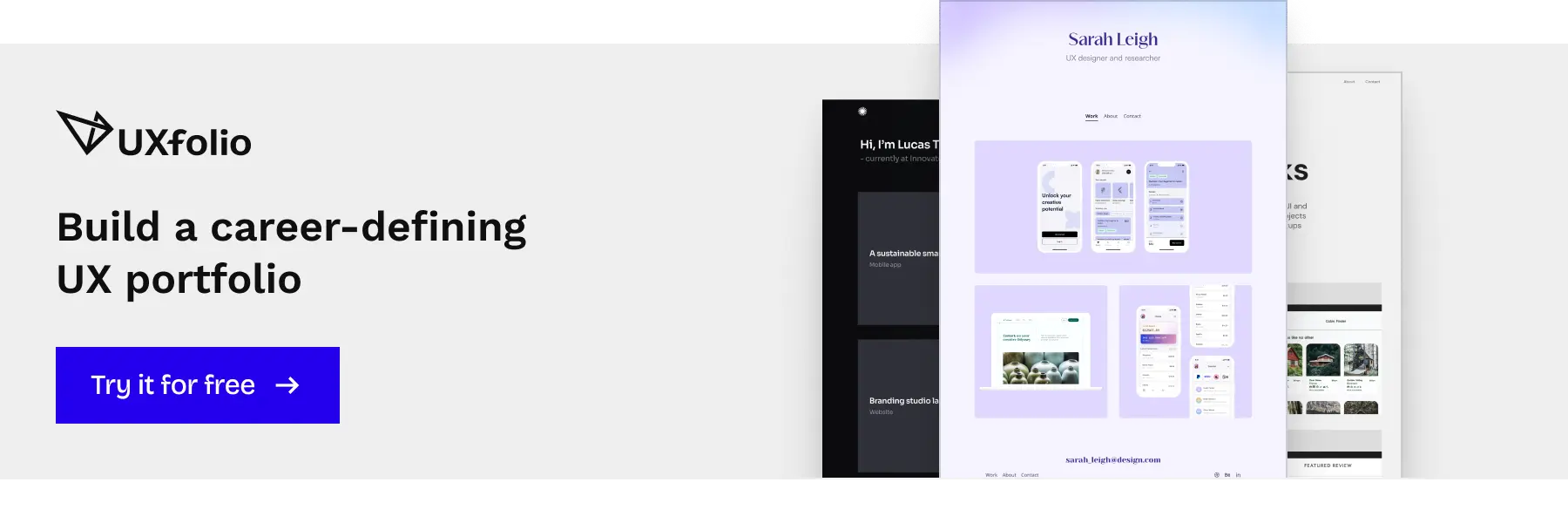
UX leads and recruiters want to hear about your
- Role: What were your responsibilities in the project?
- Team: How and who you worked with? (stakeholders, developers, designers, product managers, etc.)
- Design story: What ideas lay behind your design?
- Design decisions: How you translated business or user needs into your design?
- Way of thinking: Why you did what you did during the project?
A case study is the best format to present your work, as it provides wholesome answers to all these questions. Fortunately, a good UX portfolio is made up of case studies.
How to prepare for the presentation?
Format
Forget about printed-out slides! Why would you waste paper when you can bring your computer or tablet to the interview? You can ask any HR manager or team lead: They prefer digital presentations. After arriving at the venue, just ask for the wi-fi password at the reception and you are set.
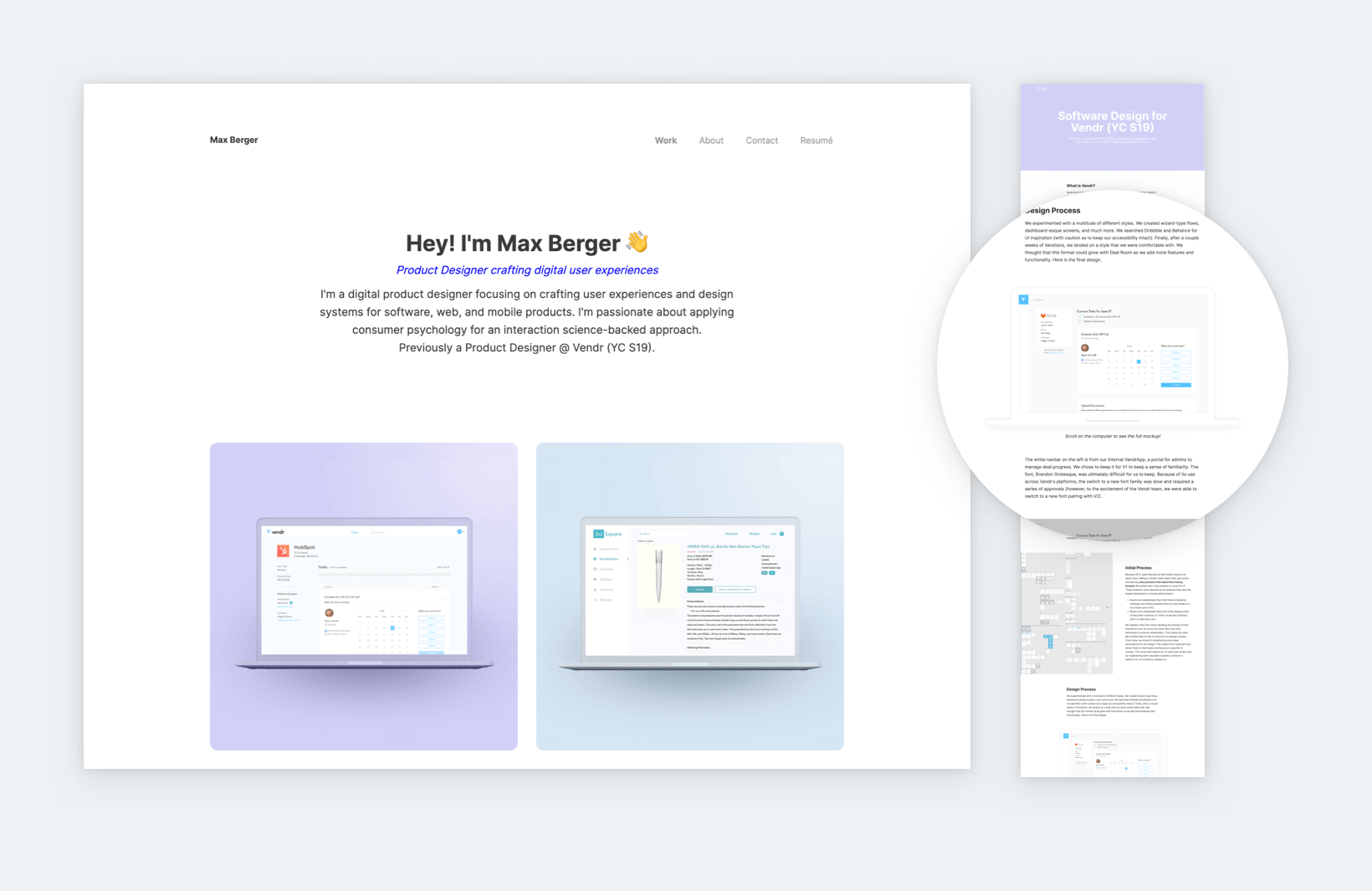
Case studies
Putting together a case study is the best preparation for a portfolio presentation. By the time you are finished, all threads will connect in your mind and you will know the conclusion they lead to. Also, when your thoughts are collected, your interviewers will find it easier to follow along.
For a start, create an outline from the stages listed in your case study. Just remember that you might not have time to present every little detail, so consider the following questions:
- Which parts are necessary for comprehension?
- Which part is the most powerful?
- Which part can help you get the job at hand?
If you spend enough time on your case study, you will know which parts best represent your skills.
Rehearsing
Once you know what you want to say, you just have to practice saying it aloud. Do not underestimate the effects of a rehearsal! The more you rehearse the more relaxed and confident you’ll feel. The goal is for you to present a project from beginning to end without having to look at your notes or reading from your case study. In a few attempts, you will be there!
How to structure a UX portfolio presentation in an interview?
Storytelling is at the heart of an outstanding UX portfolio presentation. We collected ten steps with examples to help you present the story of your design in a compelling way. Keep in mind that these examples come from different projects. (You can also see more UX portfolio examples and UX case study examples at UXfolio.)
1. Introduce yourself and give an overview
Start the presentation by introducing yourself, your role, and your specialization. Tell your interviewers what excites you the most about your job and what are your areas of expertise. Then prepare the interviewers for the presentation by breaking down how you’ll structure it.
Finish the introduction by talking about the projects in your portfolio. Share some information about the field (e.g., healthcare, sports) and the project type (e.g., redesign, purchase flow), but do not go into detail yet!
2. Tell which project is your favorite and why
UX leads and recruiters want to hire passionate problem-solvers who can handle the entire design process. So, it is likely that they will ask you to give a walkthrough of your favorite project. You should choose one that excites you and highlights most of your skills.
Before you get into the gist of it, set up the stage by answering the following questions:
- Why is this your favorite project?
- What is the project about?
- Who is it intended for?
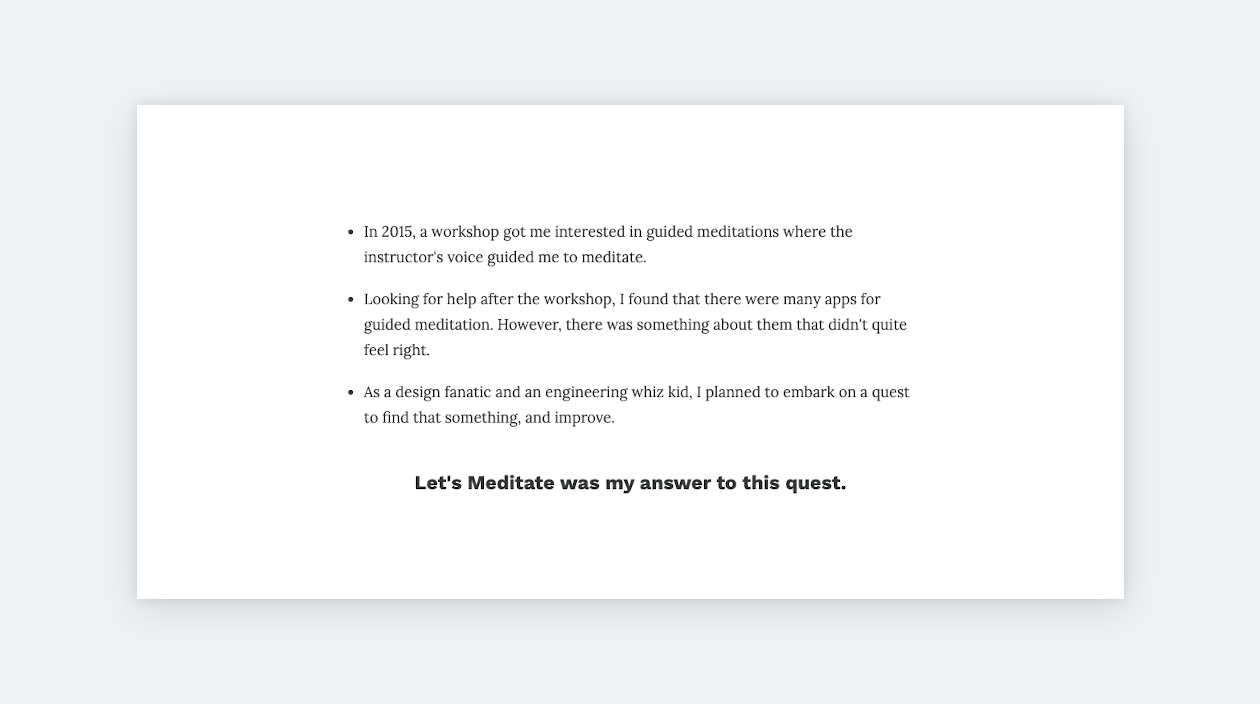
3. Talk about the team setup, your role, and activity in a project
Talk about your role and place in the team. Many candidates forget that for most positions they must be effective team workers. There is no better way to prove that than talking about your role as part of a whole.

4. Explain the main challenge
With the background information covered, it is time to reveal the challenge that will tie your design story together. It could be anything from a business issue to a user pain. Just explain it in detail!

5. Describe your process
Start with a brief outline then describe your design process step-by-step without going into too much detail. You don’t have to over-explain every technical detail. Your interviewers are aware of the basics. Instead focus on your why-s, to reveal your thought processes and reasons.

6. Mention UX methods and user insights
Listing UX methods without context is the biggest mistake applicants make. For each method, you must share how it influenced your design, otherwise, it is pointless to mention them. Another colossal mistake is forgetting about users after the intro. It is User Experience for a reason, so share what you learned about them and how!

7. Show your solution
When talking about your solution, reflect back to the challenge that you have introduced at the beginning of your presentation. Talk about the pros and cons of all the potential solutions that you have considered and explain why you chose the one you did.
8. Elaborate on one major design decision
This is your moment to shine! You can prove your potential by explaining an impactful or unexpected design decision you took. Underpin your decision with the user needs or pains that necessitated it.
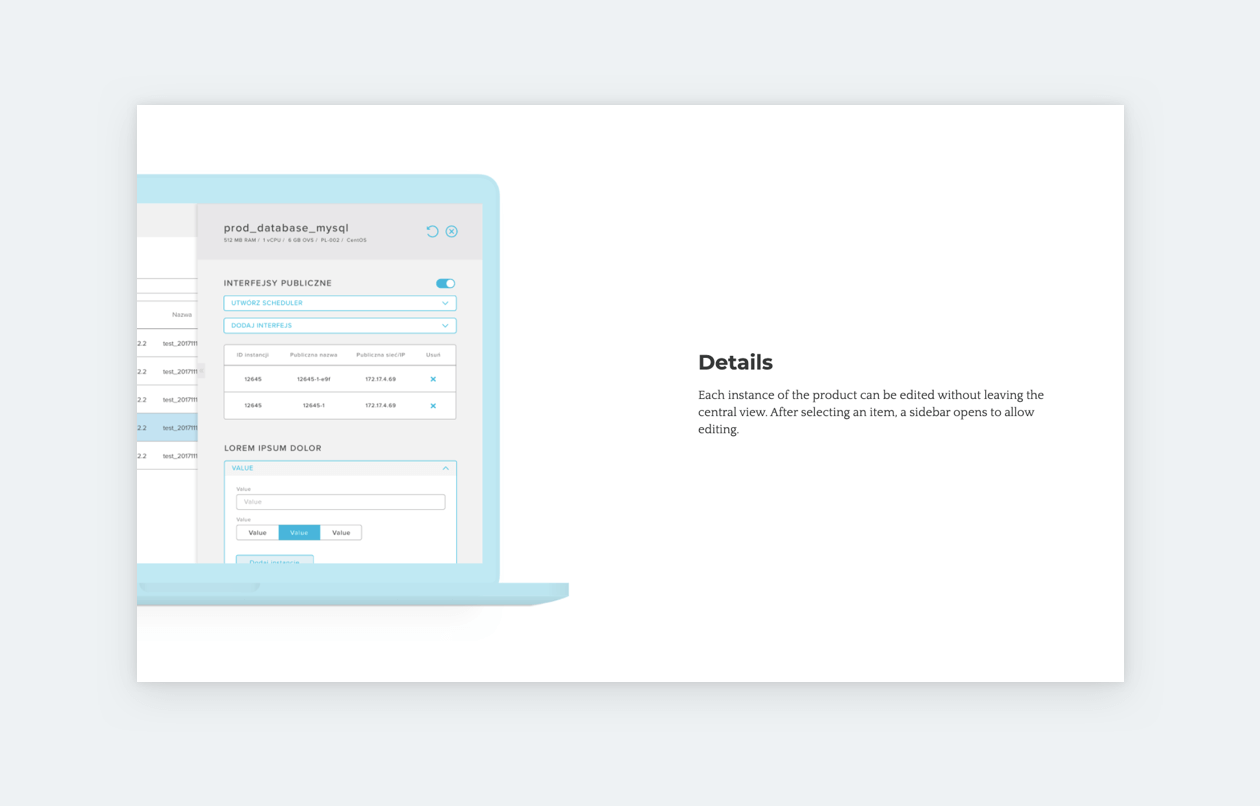
9. Showcase the results
After hyping up the solution in the previous section, it is time to reveal it: Show final screens, feature statistics, and quote the stakeholders. Statistics are particularly important since they prove that your work contributes to shared goals.
10. Share your learnings
Finish the UX portfolio presentation with learnings to show your willingness to grow as a designer. Take an assumption you had when the project started and tell your interviewers how it changed by the end. Even better, tell how these learnings have influenced your process: “Since this project, I always do [this thing in that way] for this reason.”
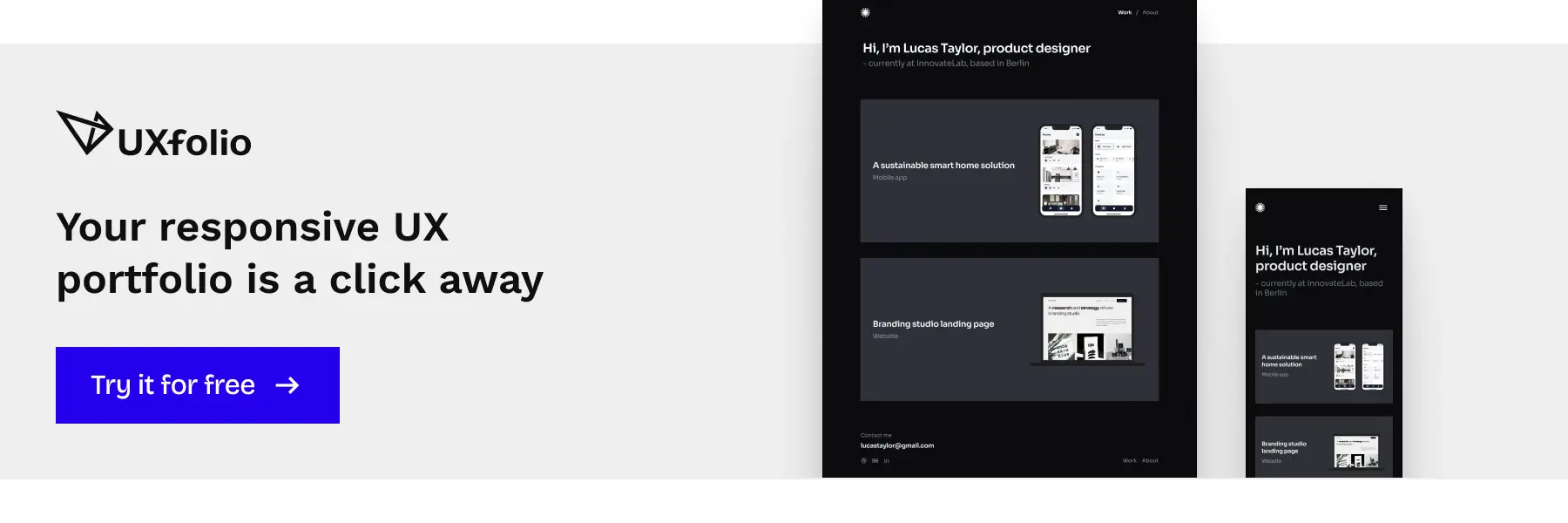
Considerations during a UX portfolio presentation
An enormous part of your success depends on the structure of your UX portfolio presentation. However, we cannot deny the importance of the way you are presenting it. Always consider the following things:
- Time. Consider time as early as the planning phase. It makes a major difference if you have 10 minutes or 30 to showcase your work. Have a plan ‘A’ and ‘B’.
- Complexity. Present your work in an easy-to-understand way. You can also give a layout to your interviewers. If the project is in a field with lots of jargon and complex concepts, keep their use to a minimum or explain them in brief.
- Show excitement. Design leads want to work with passionate people who love and care about what they do.
- Come prepared and open to common UX designer interview questions. If they ask you about the details, they want to know more about you and your way of thinking – a good sign! They won’t judge you on your design decisions, as they don’t have enough information to do so. They just want to see you have made conscious, well-thought-out decisions.
- Open the floor for questions. Your interviewers will have questions regardless, so this is more of an act of courtesy.
- Ask for feedback. Show your openness and your desire to improve. If you can, take some notes as well! And don’t forget to thank them for their time.
Remote UX portfolio presentation tips
More and more companies are open to remote interviews, which some find a blessing, others a curse. The problem is that it is much harder to make a lasting impression remotely than in person. But it is possible! Start by sorting out the basics:
Clean up your act and your room
Though you will be logged in from home, dress up and groom yourself as you would for a regular interview. Tidy up your room too, or at least the part that they will see. The goal is to appear composed.
Close your tabs, bookmarks, and windows
Let’s be honest: when someone shares their screen, our eyes get drawn to their open tabs and open windows. It’s human nature. So, before your presentation starts, close your tabs and sort out bookmarks! They slow down your computer, and you can get lost in them in front of your potential employer. Such a situation can be very frustrating, and it can lead to you losing momentum. Don’t forget about your windows and notifications either!
Test your equipment
Before the interview begins, give a restart to your computer to make sure it’s not overworked. Presenting while your screen is lagging can ruin the entire experience. So, make sure that your camera and microphone are working. Clean your screen and the lens of your camera so you can see and be seen. Finally, find a comfortable angle and good lighting.
Look into the camera and nod
From time to time, look into the lenses of your camera. This the digital equivalent of keeping eye contact with your interviewers. Also, when they are talking to you, nod lightly, so they can see that you hear what they are saying. The rest of your interview should go just as an in-person interview would.
Start building your portfolio today!
UXfolio is the easiest way to build a sleek UX portfolio and case studies. It will help you tell your design story with guiding questions and writing prompts. What’s more, UXfolio provides plenty of stunning solutions for you to showcase your wireframes, prototypes, and UIs. Try UXfolio free today!